
Mark Chadbourn
interviewed by Sandy Auden
One superficial layer of the unconscious
is undoubtedly personal. I call it the personal unconscious.
But this personal unconscious rests upon a deeper layer, which does
not derive from personal experience but is inborn. This deeper layer
I call the collective unconscious...and the contents of the
collective unconscious are known as archetypes.
Carl Gustav Jung (1875-1961)
Archetype [noun] The primitive type, model,
or pattern on which everything is formed.
The New Elizabethan Reference Dictionary

Introduction
The scope of a Mark Chadbourn fantasy is always
ambitious. In The Age of Misrule sequence, he created a 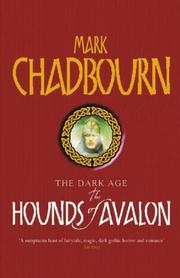 contemporary
world stunned by the re-emergence of magic and Gods; he took us to many
atmospheric British locations and introduced us to the Brothers and
Sisters of Dragons -- ordinary people who discover their destiny in
the strangeness of the new world around them. The entire trilogy was
steeped in historical fact and ancient ritual. contemporary
world stunned by the re-emergence of magic and Gods; he took us to many
atmospheric British locations and introduced us to the Brothers and
Sisters of Dragons -- ordinary people who discover their destiny in
the strangeness of the new world around them. The entire trilogy was
steeped in historical fact and ancient ritual.
In his second series, The Dark Age (featuring
The Devil in Green, The Queen of Sinister, and the soon
to be released The Hounds of Avalon) more Brothers and Sisters
of Dragons battle harsh odds against a determined evil. Chadbourn deepened
his draw on Celtic mythology and ancients symbols, chased through the
landscape of the Gods in the Otherworld or stagnated in the suffocating
depression of a supernatural siege.
But there's more to a Chadbourn story than
adventure and history. It would take many pages to explain his books
in full and even then you'd only be covering the high level details.
You see, Chadbourn's real ambitions are embedded in his prose. They
flit on the periphery of your vision, planted with intent and no small
amount of influence. And to spot them, it helps if you first understand
what an archetype is all about...

Reading Between The Lines
"Archetypes can be found in all mythologies and are part of the secret
language of the subconscious person," Chadbourn explained. "When we
talk about people, every person 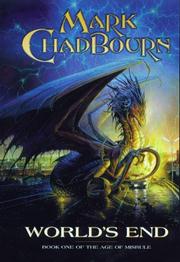 consists
of the conscious mind and subconscious mind and they're so different
that it's like having two people within the same body. The secret language
of the subconscious has lots of information packed into images and they
can leap through and inform the conscious mind at the front. consists
of the conscious mind and subconscious mind and they're so different
that it's like having two people within the same body. The secret language
of the subconscious has lots of information packed into images and they
can leap through and inform the conscious mind at the front.
"Mythology uses archetypes within stories as a way of passing on the
information, encoded within the archetypes, to generally guide and influence
society. They're powerful tools because they use this core language
that everybody understands. We're always affected by them even
though we're not aware of it because these frames of reference are encoded
into us.
"If you think of computers. Archetypes are basically the information
already on the hard drive when it comes from the shop. It's responsible
for the operating system, and that's what's in us. When we see archetypes
around us, they are images that can move us to tears or laughter or
fear, without us knowing why. When you get that strange feeling and
you don't know why it's affecting you, it's often because this archetypal
language is talking directly to you. So mythology remains powerful even
today because these archetypes are embedded in it.
"I've studied and read about archetypes for years and years. I've had
a real interest in psychology and philosophy and there's lots of areas
I dabble in that I think are all linked. I'm very interested in basic
philosophical questions about why we're here and what we're doing. All
those things that everybody is interested in but most of the time in
life you can't be bothered to think about them because you're too busy
actually getting on with life.
"When you're a writer, you have plenty of time to indulge yourself
in these stupid concepts. So I've read a lot about it and I've thought
about it a lot myself. The more you study archetypes, the more you come
to realise how much they inform your everyday life.
"Jung did a great deal of work on archetypes. He started off thinking
they were just language/image based. Then he started to think that maybe
they could actually affect the world outside, that they could affect
matter in the natural world. He felt they were so powerful that he started
going down the line that they actually had a life of their own. He believed
they were elemental forces that we tapped into and we could control
them, or maybe they controlled us. In a way, they are the elemental
spirits and spiritual beliefs some religions have at their core.
"Jung recognised that whether you see them as elemental beings or deeply
powerful psychological forces, they're sitting deeply inside us, affecting
us and the world around us all the time. The more you get into it, the
more you see how they shape your day to day living in a way that you
don't really recognise most of the time. It's like deep programming.
"When I first started writing these fantasy novels, I'd been interested
in archetypes and mythologies for a long time and I wanted to see if
the core archetypes, that the ancient cultures used in their stories,
still affected us in the modern world. When you're about writing them,
they come to affect you on a day to day basis but I think they also
affect the readers, which is what I see in the emails they send to me.
The more you surround yourself with them, the more you find them popping
up in your dreams, appearing in different shapes and forming the world
around you. There's a lot of power there, it's just hard to define what
they actually are.
"These days, I've absorbed so much of the archetype information so
deeply that I don't have to think too hard about what characters I need
to fit certain archetypal roles in my stories. When I was writing World's
End, I went back to the very earliest templates for stories. With
some of today's fantasy books, I get the impression that the authors
have looked at Lord of the Rings and written a book. That's as
far back as they've gone and they're just reflecting what they've learnt
from Lord of the Rings.
"Fantasy goes back thousands of years, to the original stories that
were told around the fire. Back then, stories were for special occasions,
for feast days or when everyone was gathered together. And story had
a much more potent function in those days. Because many of those cultures
didn't have a written language, they only had oral traditions, and they
passed on information coded into the stories.
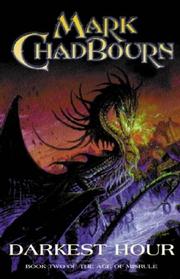 "When
you go back to the old fairytales, they were basically lessons for living.
Like Snow White was a story for young girls about awakening sexuality
and watch out for older women who will be jealous of you as your sexuality
blossoms. They bury these messages in the story because you were more
likely to remember the information in a story than if someone sits down
and tells you it baldly. Stories go directly into the subconscious and
lock into you more deeply. So in all these verbal societies the stories
were much more powerful, they affected people more and they also had
significantly more information vital to their society, life lessons
and history. "When
you go back to the old fairytales, they were basically lessons for living.
Like Snow White was a story for young girls about awakening sexuality
and watch out for older women who will be jealous of you as your sexuality
blossoms. They bury these messages in the story because you were more
likely to remember the information in a story than if someone sits down
and tells you it baldly. Stories go directly into the subconscious and
lock into you more deeply. So in all these verbal societies the stories
were much more powerful, they affected people more and they also had
significantly more information vital to their society, life lessons
and history.
"You'd get people memorising all four thousand lines of The Odyssey
or The Iliad and they'd travel round and tell people. Memory
was much more powerful then, because they didn't have written language
and people worked at skills to develop their memory. They could remember
much more than we can in our modern day. They could remember all those
lines in detail but obviously the story would change over time, because
they would add some things or take them away, depending on their effect
on the audience.
"With these stories, you can see the need for archetypes: they need
a Leader or a King; they need a Princess or a Princess Warrior Woman;
they need a Mage or Wise Man. And once you've seen the archetypes then,
when you're working on your own characters, you can find one that will
fit into those holes. That doesn't mean that the characters have to
be as one dimensional as the archetypes, that's not the way it works.
The archetypes tend to underpin the characters, or the characters are
multidimensional but they fill out the role of the archetype. I was
aware of this when I was putting my fantasy books together and the whole
of Age of Misrule follows the very ancient story templates. It
has a quest, it has the magical items, and all the things you know have
been run into the ground in Fantasy but I tried to approach them in
a different way and make them more relevant to the way we live our lives
today in the modern world.
"As well as representing the archetypes, I wanted my characters to
be real people. I think today we expect our characters to reflect us,
we don't want one dimensional fantasy people. Well, some people do obviously,
because those kinds of fantasy books sell really well. But if you're
reaching out to different audiences, which I was trying to do, then
you want characters that are as flawed as the people around us. Because
we're all flawed, there aren't any saints. And I think the most heroic
people are 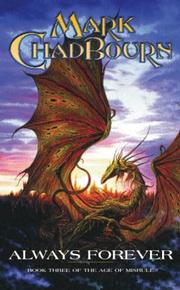 the
ones that have deep flaws but overcome those traits, rather than those
who are perfect and easily drop into the life of being a saint. the
ones that have deep flaws but overcome those traits, rather than those
who are perfect and easily drop into the life of being a saint.
"I work all this into my stories because one of my philosophies is
that if you sit back then someone else will take control; someone who
operates under a philosophy that is in opposition to your own. So every
person should become active to defend the things they believe in. As
a writer this is my way of doing it. I put ideas out there, thoughts
out there, for people to consider and to circulate. And it's a war really,
a war of ideas. Everybody's putting ideas out there. The ones that get
the most ideas out there and reach the biggest number of people are
the ones that win. I don't want extreme right wingers to put ideas out
there that will shape society and affect my life and those around me.
I want to combat that with my own ideas and those are buried in the
stories. You don't make them obvious or preach to people, you have to
bury them as deeply as possible so it sneaks into the subconscious.
"In my fantasy stories, the heroes aren't toffs or princes that are
given to a poor family who rollover with the aristocracy. They're normal
people who are working/lower middle class. I'm showing that all people
have the power to change things, that's the broad, clear message. In
a lot of fantasy, all the people are high born and it's sending out
a message that these are the movers and shakers, that the rest of you
are followers. Frodo's the toff in the Shire and poor old Sam's the
one who trudges along behind towing his bags, the working class bloke.
Tolkien had Sam as a thick but loyal follower, he's not the one gets
to carry the ring or be a hero, but I think everybody likes Sam more,
because nobody likes a toff do they?! When you look at the story, you
don't think about things like that but it's still there as a coded message:
it's always the upper classes that are the heroes. I find that disconcerting."

The Modern Reader
"Story has evolved from two-dimensional characters of the 60's. We've
been swamped by story in a way that previous 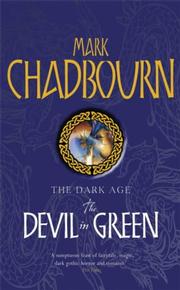 generations
never have, with TV and film more than anything else. VCRs and DVDs
give everybody access to stories all the time. We understand the rhythms
of stories, we know when the twists and turns are going to come, we
know the characters and the kinds of stories that are out there in a
way that previous generations never did. So we've become extremely sophisticated
and we demand more. The more you have, the more complex your tastes
become and nobody will settle for simple characters anymore. generations
never have, with TV and film more than anything else. VCRs and DVDs
give everybody access to stories all the time. We understand the rhythms
of stories, we know when the twists and turns are going to come, we
know the characters and the kinds of stories that are out there in a
way that previous generations never did. So we've become extremely sophisticated
and we demand more. The more you have, the more complex your tastes
become and nobody will settle for simple characters anymore.
"We've become aware of the tricks of the storyteller. Now, the storyteller
has to become tricksier to make it work for you. For a story to be effective,
a writer has to think about the plot more and in greater depth than
the reader does, which means making characters much more complex, much
more rounded.
"But the fact remains that we still need story, it gives meaning to
our lives. It allows us to consider why we're here and why we're 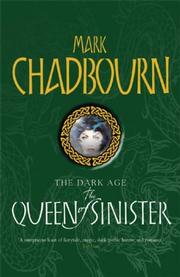 doing
what we're doing. It allows us to consider the bigger issues. If all
there was to life was being a wage slave in an office we'd have very
poor existences. Story allows us to immerse ourselves in an environment
where we can look at the bigger picture, get a perspective on things
we wouldn't have now. Storytelling is a structure in which we consider
the meaning that is embedded in life, the meaning that you don't see
around you always because you're so rooted in what you're doing. doing
what we're doing. It allows us to consider the bigger issues. If all
there was to life was being a wage slave in an office we'd have very
poor existences. Story allows us to immerse ourselves in an environment
where we can look at the bigger picture, get a perspective on things
we wouldn't have now. Storytelling is a structure in which we consider
the meaning that is embedded in life, the meaning that you don't see
around you always because you're so rooted in what you're doing.
"It's not escapism though. In away, I think it's actually the opposite.
Stories force you to look at what is really important in life what it
is to be a human being in the modern world. To consider, on a very basic
level, the differences between good and evil and the reasons why human
values are important. To consider why you're doing what you're doing,
to look at the subtext of life, to consider life as a story and rather
than just see the surface, to look at the meaning beneath.
"I've kept this in mind throughout all my books, especially the latest
one, Hounds of Avalon. It's a very complex book, packed with
incidents. It's very dense, in terms of ideas rather than reading, and
I think that offers value for readers. If a story is too simple these
days, it doesn't affect people. I've put a lot of thought and detail
into the books, and increasingly so with each volume, to try and reach
that density of ideas.  There's
a lot going on at the surface in Hounds but there's a lot going
on deep inside it too, multiple strands, multiple themes. Because I
want to give some meat to the story and that's how I deal with the increasing
sophistication. You don't make stories more complicated, you make them
more complex. By that I mean you don't have one story that's tied up
in knots, you have a complexity of several different idea strands that
connect with each other beneath the surface. There's
a lot going on at the surface in Hounds but there's a lot going
on deep inside it too, multiple strands, multiple themes. Because I
want to give some meat to the story and that's how I deal with the increasing
sophistication. You don't make stories more complicated, you make them
more complex. By that I mean you don't have one story that's tied up
in knots, you have a complexity of several different idea strands that
connect with each other beneath the surface.
"My business is communication and it's about reaching as many people
as possible and getting your ideas across to as many people as possible
but getting it across in a language they understand. If I wrote a dense
tract that had all the things I was concerned about in it, then nobody
would read it because it would be boring.
"That's why I'm a big supporter of popular fiction that has depth,
as opposed to literary fiction -- which doesn't communicate broadly,
it just reaches a very narrow band. If you look at it purely in communication
terms, literary fiction is not very good. It's very arty and it speaks
to a tiny fraction of the population. Popular fiction with depth uses
a way of communicating ideas that resonates out and reaches all people.
You don't expect this stuff to be going on in popular fiction because
the common view, for a lot of literary snobs, is that popular fiction
doesn't have anything in it beyond the story. I know lots of authors
and I know that's not true. They put all sorts of stuff in there, you
can see it in their books if you read it carefully. There's a lot buried
beneath the story -- as much as you would find in literary fiction but
the snobbery tends to blind people a bit to these things.
"And you know all the subtext is reaching people from the feedback
you receive. I've had some very learned papers and theses from people
who have recognised the archetypes in my writing. Just on a very basic
level, they talk about the importance of the Mother as an archetype
and how that influences their lives. That's the goddesses in the stories,
the power of the mother and the power of women. These themes, these
undercurrents have affected them and made them reflect on their lives
and they tend to write to me about that, about how it's made them step
back from things.
"It's quite intriguing because they don't know it's happening to them.
They've read the book and put it down. A few days later, it's filtered
through and affected their thought processes. I almost wonder if these
archetypes lie dormant a lot of the time and when they appear in some
form of culture that affects the conscious mind, it's almost like a
key that unlocks the door and things start rushing through it."

The Writing Process
"Of course, I don't achieve all these layers of complexity on the first
draft. I don't think anybody does. The way I work is that when I'm writing
a book I know the basic story -- where I'm starting, where I'm ending,
I know what characters are in there and some of the points I'm going
to include. Then you work through it and often things develop. Sometimes
you're not wholly aware of an idea until you get to the end of the book
because those ideas are shaped by the subconscious, by those archetypes
working deep in your mind. You get to the end and you suddenly realise
what your subconscious has been telling you all the way through the
book. Then you have to go back and consciously work those ideas back
into the book and make them more effective. It can take five or six
drafts to get it right.
"For the new writers I think that's one of the hardest things to learn
-- it's not in the writing, it's in the re-writing. First drafts are
always rubbish no matter how great a writer you are and the second draft
can see some big changes--of characters, and character arcs and events.
"In the subsequent drafts, you tend to sharpen things up to focus on
the themes, and after that you're just trying to improve the line by
line writing--like too many Germanic sub clauses, making the sentences
active and not passive, trying to make it clear and not be too repetitious.
And, of course, making sure you don't have a huge faux pas in
there like I did in Always Forever. Several readers have spoken
to me about the part where one of the characters has had his hand chopped
off and he's having a new one put on. I've got him shaking hands with
somebody with both hands. And you think, I've read this book fifteen
times, the editor has read it ten times, how the hell did that get through?
But it still does. You just can't re-draft and edit enough times.
"And all the writing and editing is incredibly intense, because you
have to sink so far into the dark depths of your subconscious. You can't
have any distractions. You can't have people talking to you. You can't
have anything that will drag you out of it. And it can become so intense
that you feel like you've run a marathon after a short period of writing.
You have to go out and do something different just to get your brain
working in different way, on a different level. For someone who comes
from a basic working class background as me it sounds really pretentious
to say it's exhausting, because working down a pit is exhausting not
sitting here thinking about stories. But it is, it's mentally draining.
"I do physical exercise to release the serotonin. I do yoga, I go for
runs, I like to immerse myself in films or music or comics or just go
out and get drunk. Whatever it is, you've just got to do something to
get the brain to switch into a different mode, to take the shackles
off, because it gets burdened by the constant inward looking and you
need to drag yourself out.
"And yet, despite all the intensity, I'm still quite positive and optimistic.
I think humanity faces a lot of problems that we need to overcome. In
my stories, I like to look at the qualities within us and how we will/can
overcome those problems. All my books offer elements of High Fantasy
but they mix it with something else. It's High Fantasy crossed with
Dark Fantasy crossed with Contemporary settings. I don't write to rules,
I just put in my books every thing that's me, everything I think about
and believe about and I cover a whole broad area. Fantasy should
cover the whole breadth of imagination but it sometimes seems so narrowly
defined to High Fantasy that I find it annoying. I think people should
have a choice. You don't want twenty-seven different choices of vanilla.
You want a vanilla and a chocolate chip and strawberry. And I'm offering
the chocolate chip."

© Sandy Auden 2004.
Elsewhere in infinity plus:
Elsewhere on the web:
|



